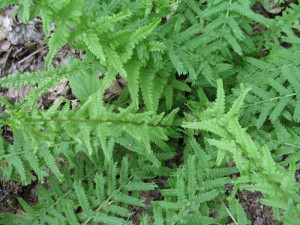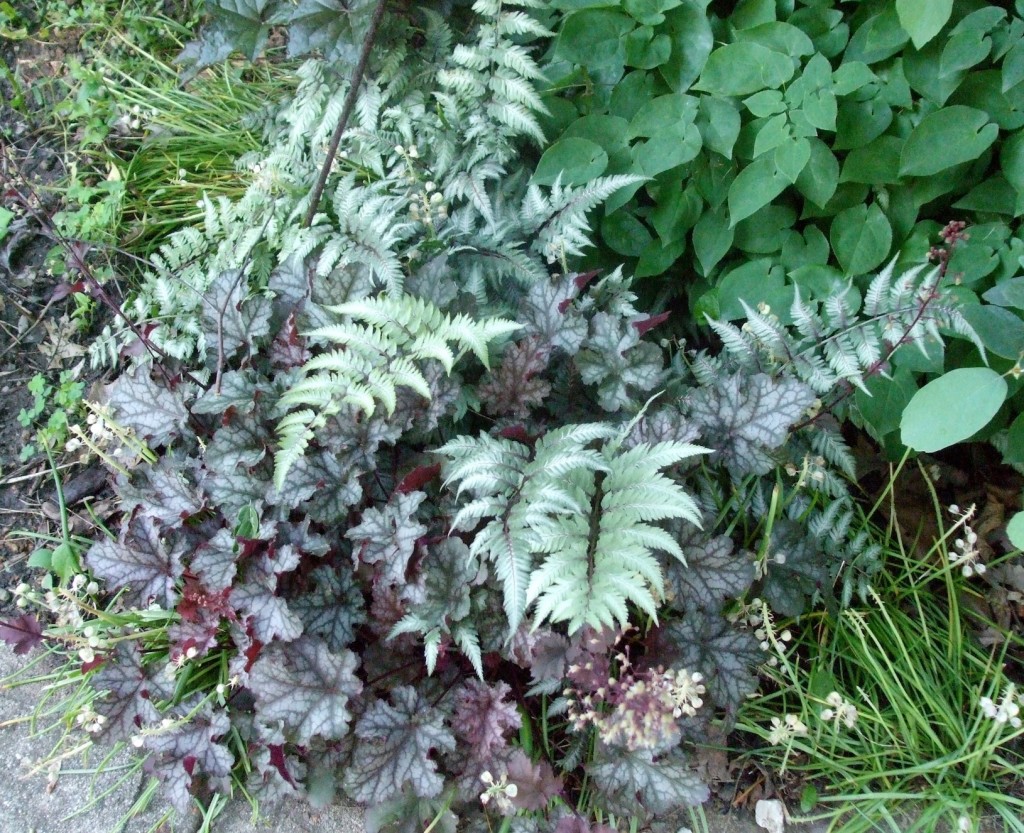
‘Branford Beauty’ fern earned five stars for its performance during plant trials at the Chicago Botanic Garden. Photo courtesy perennialresource.com
The Chicago Botanic Garden has released its six-year evaluation of lady ferns and Japanese painted fern (Athyrium spp.). This group of ferns is among the most elegant, yet utilitarian plants for the shade garden, said Richard Hawke, who heads up the evaluation program at the Glencoe, Illinois, botanic garden.

Victoriae lady fern earned five starts in the CBG evaluations. Photo courtesy Missouri Botanical Garden/mobot.org
Two of my Japanese painted ferns, ‘Branford Beauty’ and ‘Pewter Lace’, were among 13 to receive five stars. ‘Branford Beauty’ is a clump grower and ‘Pewter Lace’ (Athyrium niponicum var. pictum) is a spreader. Among native lady ferns, (A. felix-femina), the sometimes hard-to-find ‘Victoriae’ earned five stars.
If you’ve grown these ferns, you know they are not always the most vigorous, especially when it gets hot and especially dry. It’s not uncommon for them to go dormant during hot, dry spells, frequently reviving in late summer and fall as weather moderates. The botanic garden saw first hand how these ferns handle less than desirable conditions with the loss of a huge shade tree that left the bed in sweltering afternoon sun.
Among other challenges, browsing by rabbits, and fence eventually was built around the test plot to keep out the critters.
The ferny, lance-shaped fronds are perfect companions to the bolder and broader leaves of other shade-loving plants, such as hosta, lungwort (Pulmonaria spp.) and coral bells (Heuchera spp.). I love the way the way Japanese painted ferns look with silvery-purple coral bells. “Crown injury or plant losses in winter were uncommon and infrequent occurrences during the trial,” Hawke wrote in his evaluation.

The purple-veined Japanese painted fern is a good companion with silvery-purple coral bells. This combination also camouflages the ripening foliage of grape hyacinths and other spring bulbs. © Jo Ellen Meyers Sharp
‘Branford Beauty’ is between a lady fern and a Japanese painted fern in its form and habit. “The upright habit and fine-textured leaves of this hybrid resemble the lady fern, while the colorful arching and curved fronds are like Japanese painted fern,” he wrote. ‘Branford Beauty’ also was more uniformly silver green.
The fronds of ‘Pewter Lace’ “emerged purple, but aged silver-green with purple highlights on the lower portion of the pinnae along the purple rachis. The irregularly arched fronds and mounded habit were comparable to other cultivars. No rabbit damage, drought stress, or scorch was observed during the trial,” Hawke wrote in the report.
Hawke said gardeners and landscapers appreciate athyrium’s feathery textures and fronds of many colors, which contrast and complement other perennials. Grow them in moist, well-drained soil in full to part shade. Water during dry spells.
Love my ferns, my Japanese painted ferns have been amazing even with the increase in sun, they have become almost ground covers!
Very interesting! Thanks for including the link to the full evaluation–glad to see that ‘Ghost’, a favorite of mine, is also a five star earner!